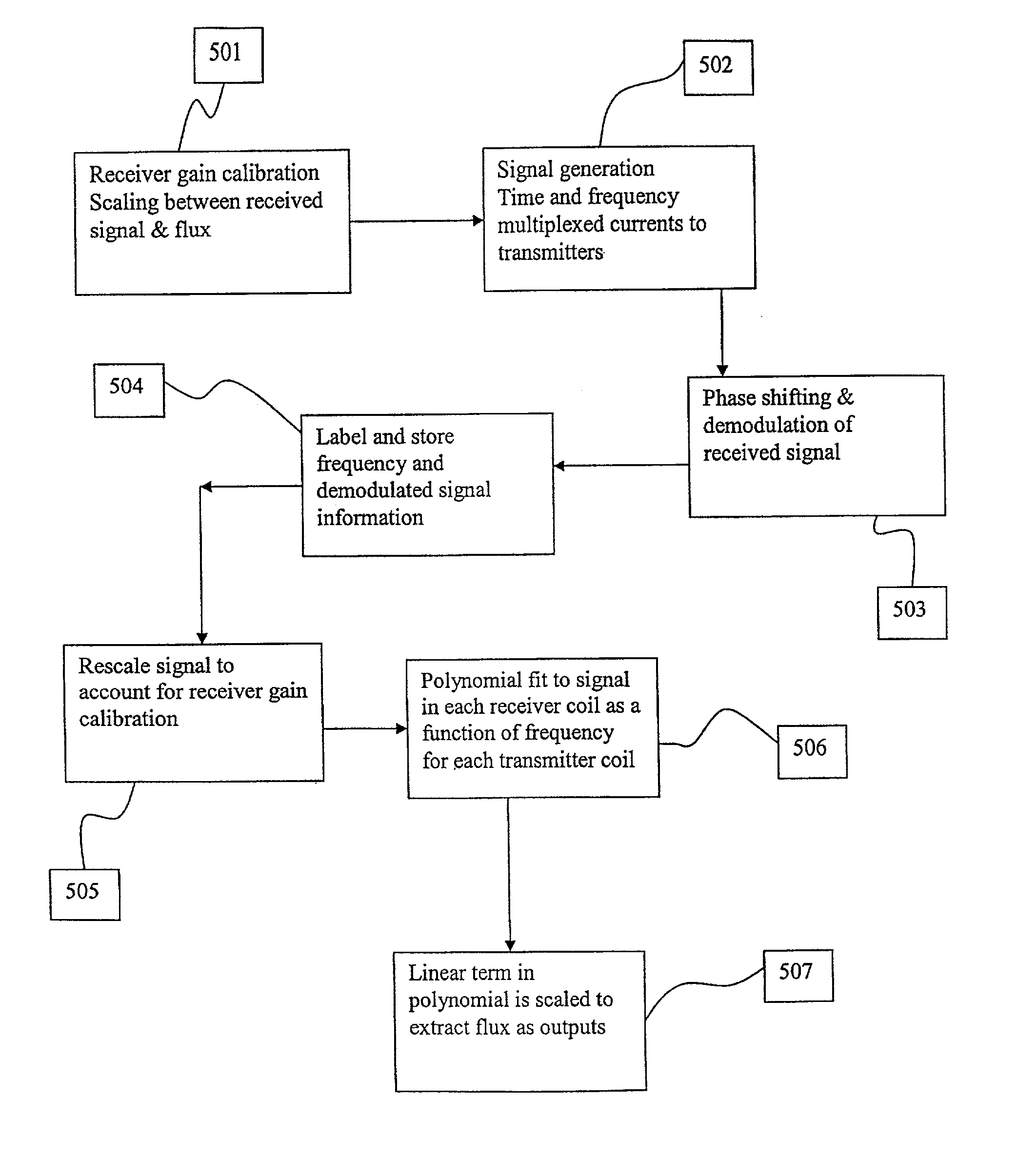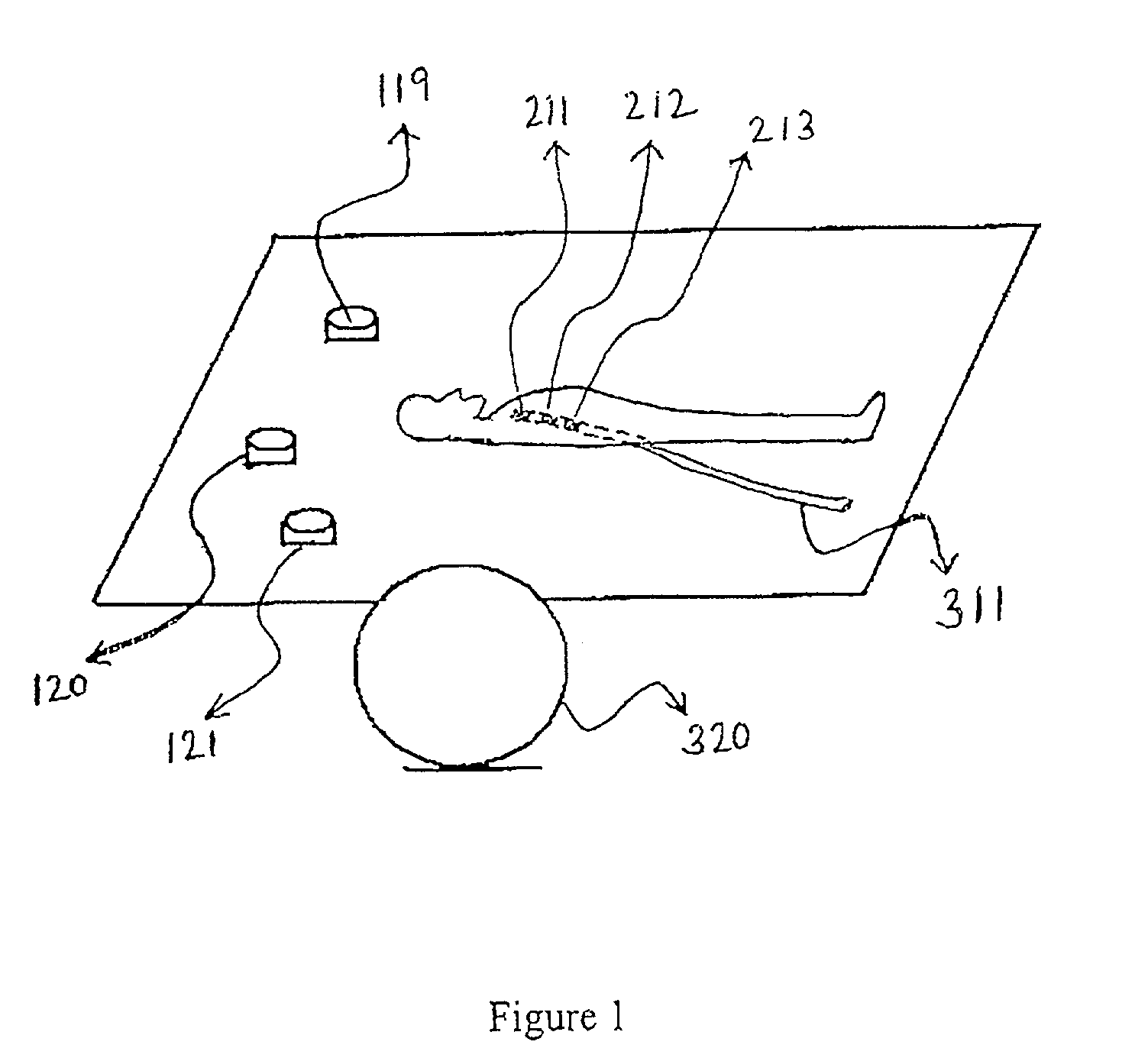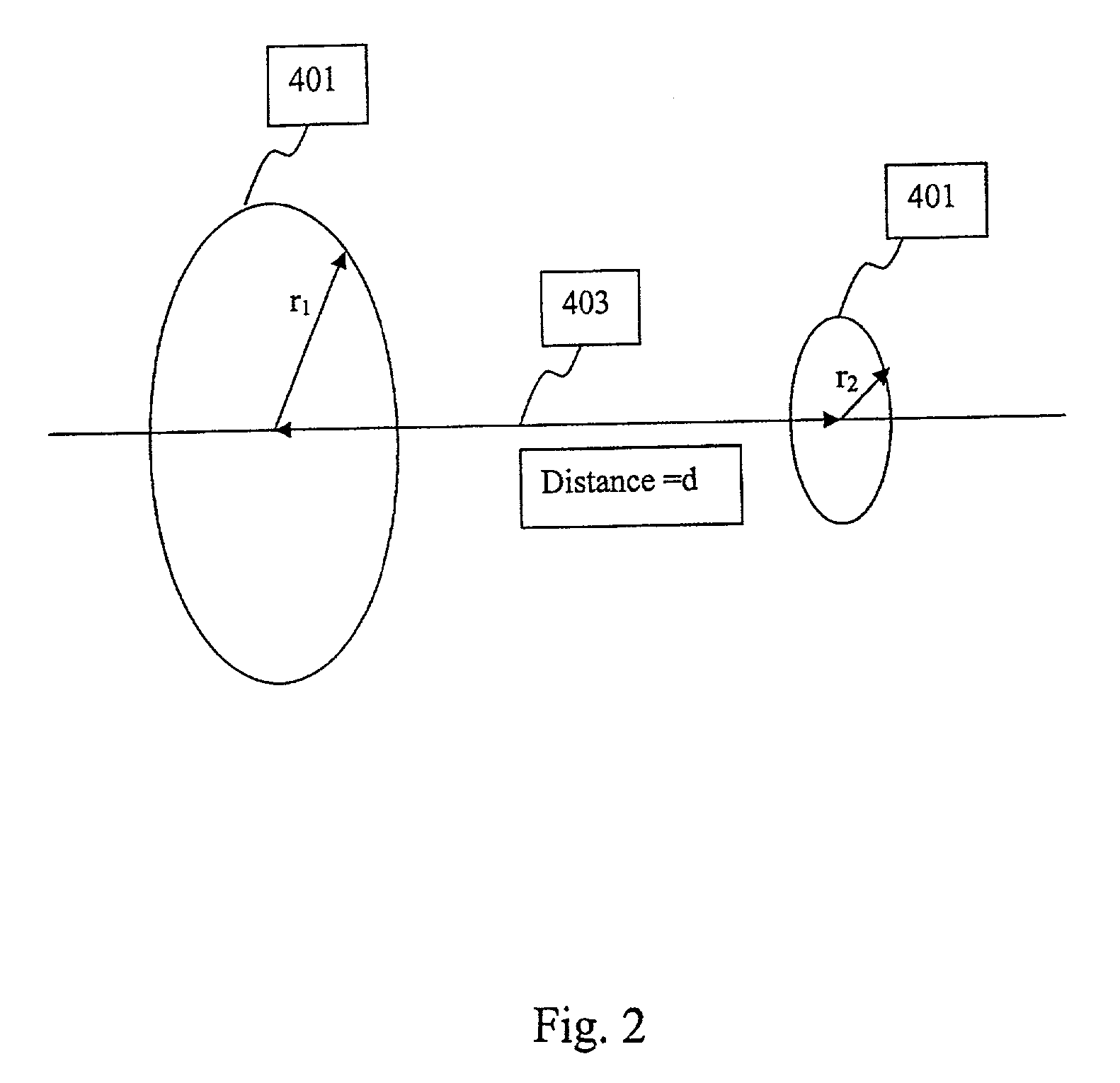Method and apparatus for refinably accurate localization of devices and instruments in scattering environments
a scattering environment and localization technology, applied in the field of refinably accurate localization of devices and instruments in scattering environments, can solve the problems of significant loss of accuracy in position and/or orientation determination, standard imaging methods such as x-ray, ct, or mri may not provide adequate information for navigation, and may not provide sufficient accuracy. the effect of accurate approximation and refinemen
- Summary
- Abstract
- Description
- Claims
- Application Information
AI Technical Summary
Benefits of technology
Problems solved by technology
Method used
Image
Examples
Embodiment Construction
[0013]The localization method described herein is based on the use of multiple transmitters (e.g., coils), at least three in number, each fixed at a known spatial location and capable of transmitting electromagnetic radiation at at least three distinct frequencies. Preferably the transmission method uses driving currents in each coil with the time dependence of the currents being sinusoidal at each of the distinct frequencies.
[0014]One or more receivers (such as coils or other magnetic field sensor such as Hall probes) is located within or on the device whose localization is desired. While receiver coils are described in this preferred embodiment, it should be understood that this invention includes the use of other magnetic field sensors. An example of a medical device where such coils could be used is a catheter with receiving coils mounted at or near the catheter tip. Due to the time dependence of the transmitted magnetic field, the changing magnetic flux in the receiver coils pr...
PUM
 Login to View More
Login to View More Abstract
Description
Claims
Application Information
 Login to View More
Login to View More - R&D
- Intellectual Property
- Life Sciences
- Materials
- Tech Scout
- Unparalleled Data Quality
- Higher Quality Content
- 60% Fewer Hallucinations
Browse by: Latest US Patents, China's latest patents, Technical Efficacy Thesaurus, Application Domain, Technology Topic, Popular Technical Reports.
© 2025 PatSnap. All rights reserved.Legal|Privacy policy|Modern Slavery Act Transparency Statement|Sitemap|About US| Contact US: help@patsnap.com



